|
Electrostatics
Electromagnetics
Electricity &
Magnetism
© The scientific sentence. 2010
| Line of fields
The spatial distribution of a field in a region is
represented by lines of field.
The number of lines, crossing a surface
perpendicular to the lines, per unit area,
is called density of lines.
1. Gravitational field
Gravity is the gravitational field.
The gravitational field g at a point P is defined as
the gravitational force (weight) F on a particle located at P
divided by the mass m of the particle; that the gravitational
force per unit mass.
→ →
g = F/m
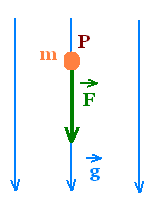
We are familiar with the gravitational field of the earth,
where the vector g is called the acceleration due to gravity.
This vector acceleration is directed vertically downward. It has
the expression:
→
→
g = - 9.81 j
→
j is the unit vector directed upward away
from the center of earth. The quantity 9.81 m/s2 is the
value of the gravitational field of the earth at a point near
the surface of the earth.
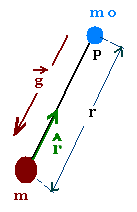
Any mass other than the earth has a gravitational field.
Let's consider a particle with mass m and another particle
(test particle) of mass mo. The two masses attract
each other in accordance to Newton's law of gravitation:
mo g = Gmom/r2.
Therefore
The gravitational field g of the mass m is:
g = G m/r2
→
^
g = - (Gm/r2) r
r is the distance from the center of the object of mass m
to the point P where the field is evaluated, and ^r is the unit
vector directed away from the center of the object and toward the point P.
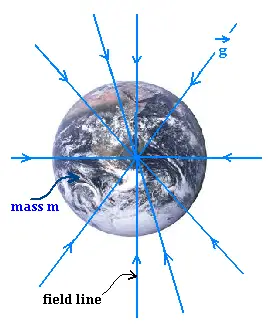
The gravitational field lines are radial.
The field g is tangent to the line at each point on the line.
The lines are directed away from a test mass toward
a point mass.
The spacing in the drawn lines indicates the
magnitude of the field. Where the lines are close
together, or dense,the field g is large; and where
they are far apart, the field g is small as inside the earth.
The density of lines is proportional to the field g, then
to the mass m.
2. Electric field
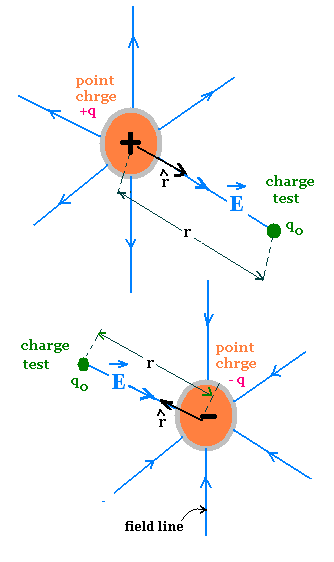
As a gravitational field, the electric field is a vector
quantity. If a test charge particle qo is placed at
a point P at a distance R from a charge particle q, then the
electric field E at the point P due to the charge q is
defined as the electric force F exerted by the charge q
on the test charge particle divided by the test particle's charge
qo. That is
→
→
E = F/qo
From Coulomb's law
→
^
E =(q/4πεor2)r
The electric field lines are radial.
The field E is tangent to the line at each point on the line.
The lines are directed away from a positive charge and toward
a negative charge.
The spacing in the drawn lines indicates the
magnitude of the field. Where the lines are close
together, or dense, the field E is large; and where
they are far apart, the field E is small.
The density of lines is proportional to the field E, then
to the charge |q|.
A uniform field is represented by field lines that are
equally spaced, straight and parallel.
2. Magnetic field
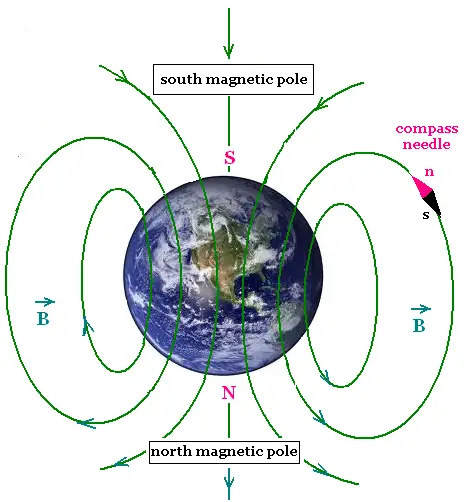
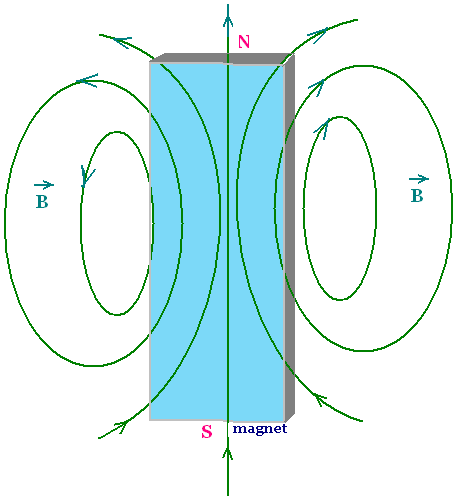
A moving charges, that is electric current is the
principal source of magnetic field.
The vector magnetic field exerts a force on
a moving charge or a current-carrying conductor.
At a certain point, the magnetic force F m due to
the magnetic field B exerted on the moving particle of charge q
is always perpendicular to the velocity v of the moving charge,
and perpendicular to the vector field B, that is perpendicular to
the plane formed by the vector v and B.
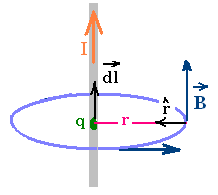
Force on a moving charge:
→
→ →
Fm = q v x B
Force on a set of moving charges:
carrying conductor dl
→
→ →
Fm = ∫Idl x B
Magnetic field of moving charges
carrying conductor dl:
→
→ ^
B = (μo/4π)∫ (I dl x r)/r2
|
|